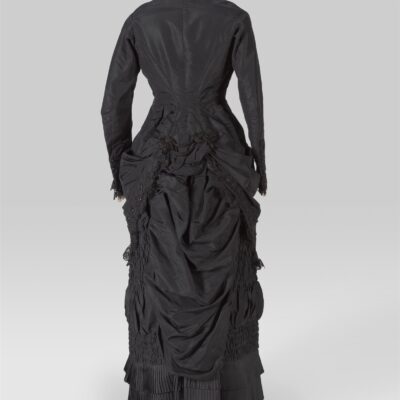
EFHA World 08.09.2023
12.12.2018
1900scouture
The story behind one of fashion and art most well-known collaborations
In 1908, three years after his shop opened at 5 rue Auber in Paris, many artists gave couturier Paul Poiret a fairly precise interpretation of his creations, linking them to the spirit of the age through their drawings.
Poiret retraced the story of one of the most well-known collaboration of this kind – and all that went along with it – quite well:
“I confided to [Paul] Iribe my intention to create a very nice publication, destined to the elite of good society; a volume of his drawings of my clothes, printed on beautiful paper by Arches or Holland Paper, which would be sent as a tribute to all the great ladies of the world. Look, Iribe needed money. I paid him the price of his first drawings and he disappeared. (…) I seem to remember that I had to threaten him rather seriously to force him to complete the volume. In the end he sent me the last originals and we went to press. Today this work is well known and can be found in the library of every artist or art lover. It is an amazing thing, which then constituted an unprecedented documentation. The book had been conceived with so much spirit that today it was just a bit old-fashioned. It was entitled Les robes de Paul Poiret racontéés par Paul Iribe. A copy was sent to every sovereign of Europe, with a personalized foreword, placed after the endings and printed in refined characters. All the copies were well received and appreciated, except that of S.M. the Queen of England, which was sent back to me with a letter from a court lady in which I was asked to abstain in the future from such mailings. I never understood the reason for the misunderstanding.”
This publication and the others that followed – amongst other, one curated by Georges Lepape – anticipated a rebirth of fashion plates in a modern style, to reflect the new and more slender silhouette of the beginning of the twentieth century.
It was also one of the first examples of attempts that Poiret made to cement the relationship between art and fashion, later expressed in collaborations with Erté and Raoul Dufy, among others.
The album by Iribe was made with the stencil technique known as pochoir, with bright and saturated areas of colour. It was an approach that not only reflected the novelty of Poiret’s designs, but also its unique palette. In fact, even if the garments depicted in the pochoirs referred to Neoclassicism, their acid colours and exotic accessories, in particular the turbans wrapped in the Madame de Staël style, gave more the impression of Orientalism.
The illustrator presented Poiret’s work in a flattened and highly decorative modern language that communicated the spirit of evasion in a manner that was far more convincing for the time, than the traditional “flat” way of drawing fashion and its forms.